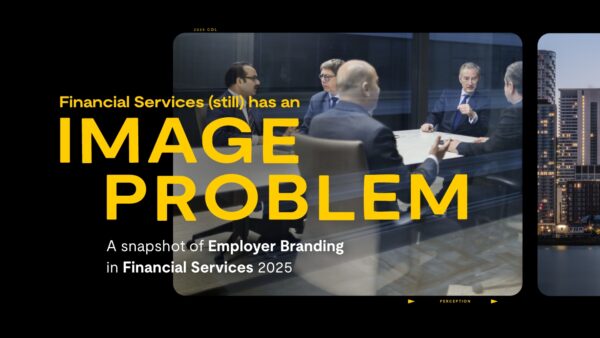Trust in Translation: Making Digital Healthcare Feel Safe
At a time when AI can diagnose cancer, but a leaked patient file can obliterate trust, digital healthcare marketing has a new brief – translating digital security into something people can actually feel.
In June 2024, a ransomware attack on Synnovis, a pathology services provider working with NHS hospitals in London, disrupted thousands of cancer and transplant procedures. Staff were locked out of systems, diagnostics were delayed, patients were left in limbo, and public confidence was shaken.
From radiology to dentistry, it only takes one cybersecurity breach to erode years of patient and stakeholder trust. And while your digital systems might be technically secure, they can still feel unsafe to the people using them. Because no matter how smart the technology, people don’t trust what they don’t understand.
 From radiology to dentistry, it only takes one cybersecurity breach to erode years of patient and stakeholder trust.
From radiology to dentistry, it only takes one cybersecurity breach to erode years of patient and stakeholder trust.
Becoming emotionally credible
So, if you’re leading communications in a healthcare organisation today, you’re also in charge of managing fear, enabling digital consent, and guiding people through technical decisions that are deeply personal. The challenge is doing so in a way that respects their intelligence and honours their vulnerability, while recognising that the language of healthcare security is inherently inaccessible.
Brands love to lead with technical assurances like ‘ISO 27001 certified’, ‘GDPR compliant’, or ‘EDHS compliant’. It’s understandable – providers want to demonstrate good data governance and regulatory rigour around their digital services.
But for most people, these terms are either unfamiliar or irrelevant. And when the data in question includes their cancer history, mental health treatment plan, or reproductive scan, feeling safe matters more than ever.
Patients want to know:
- Who will see my data?
- Will it be stored forever?
- Could it be shared with someone I didn’t approve?
- Will it be used without my knowledge?
- Could this come back to affect my job, my insurance, or my family?
When those questions are left unanswered or never even acknowledged, patients start to fill in the blanks with fear.
This is where comms and marketing teams need to step in as translators. Not just to simplify but to humanise digital healthcare processes by building the bridge between what the tech does and what the patient needs to hear.
 If you’re leading communications in a healthcare organisation today, you’re also in charge of managing fear.
If you’re leading communications in a healthcare organisation today, you’re also in charge of managing fear.
New storytelling opportunities
The answer to building trust isn’t always a bold campaign. Often, it’s a series of small design and messaging choices that meet people where they are:
1. Make privacy visible upfront
Too many healthcare organisations hide their data protection statements in their website footer or pack their patient information leaflets with jargon. Instead, make straightforward privacy messaging part of the onboarding process. Use simple explainer screens or videos that show what’s being done with data, and why, in everyday language. The tone you set in those early interactions can shape the entire care experience, while also influencing the likelihood of repeat business and recommendations.
2. Focus on people over processes
Instead of crafting your messaging around systems and certifications, try talking about the humans behind the scenes. Like the fact that your CTO used to work in cybersecurity for the army, or that your head of governance signs off every patient pathway and your dental AI is overseen by a clinical board. Humanising the process builds emotional credibility.
3. Translate fear into reassurance
Patients are often scared of the unknown. If your organisation uses AI, or other cutting-edge tech, be upfront about it. Explain clearly what it means and what it doesn’t. “Our AI assists radiologists in identifying early signs of disease, but every result is reviewed by a consultant before diagnosis.” A sentence as simple as that can diffuse so much tension for worried patients and help accelerate decisions.
4. Use narrative proof in place of platitudes
Don’t just say “your data is safe” – demonstrate it with proof points. For example: “We’ve kept over 1 million dental images safe. Every file is encrypted and stored in UK data centres.” Or if your platform gives patients full control to review, download, or delete their data, show that in a short video. These kinds of specifics can help turn suspicion and hesitation into reassurance and peace of mind.
 If your organisation uses AI, or other cutting-edge tech, be upfront about it.
If your organisation uses AI, or other cutting-edge tech, be upfront about it.
5. Create feedback loops
Rather than being won through a single campaign, trust is built over time. Alongside traditional communications, why not ask patients how they feel about your digital systems and what you can improve? Run regular micro-surveys, focus groups, or offer post-treatment feedback forms. Often these will help surface patient concerns that you can address not only in your messaging but also in the way services are delivered. Acting on feedback matters.
Trust must be a lived brand value
Ultimately, patients (and other business partners) don’t choose healthcare providers solely based on price or even quality of care anymore. Increasingly, they make their decision based on whether they feel safe, in every sense of the word.
That includes data transparency, respectful UX, and honest marketing. A clear sense that the organisation has thought deeply about what digital trust really means is critical.
Because when a parent uploads a photo of their child’s molar to your dental app, or a 68-year-old grandmother consents to a radiology scan being shared with a specialist abroad, those aren’t abstract workflows. Those are moments where human lives intersect with systems.
And that technology needs to feel safe, not just be compliant. In the digital age, trust isn’t just something you say or regulate. It’s something you earn, word by word and pixel by pixel.
Talk to our team about building trust in your digihealth solution.









